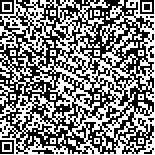| 摘要: |
| [摘要] 目的 分析颅面部骨纤维异常增殖症的CT与MRI的表现,探讨CT、MRI的诊断价值。方法 对经病理证实的28例颅面部骨纤维异常增殖症的临床及影像学资料进行回顾性分析。结果 28例中,单骨型12例,多骨型16例。22例CT检查表现为磨砂玻璃型8例,虫蚀状6例,丝瓜络状5例,硬化型3例;3例增强扫描呈明显不均匀强化。病变累及视神经管5例,眶上裂4例,颈动脉沟2例,破裂孔2例,鼻泪管2例,鼻道2例,圆孔1例,卵圆孔1例。6例MRI检查4例T1WI、T2WI均为低信号,2例T1WI、T2WI以等、低信号为主的混杂信号,2例增强扫描后呈明显不均匀强化。结论 颅面部骨纤维异常增殖症影像学表现多样化,CT和MRI对诊断该病有重要价值,可以反映其病理组织类型。 |
| 关键词: 颅面部骨纤维异常增殖症 X线计算机体层摄影术 磁共振成像 |
| DOI:10.3969/j.issn.1674-3806.2013.01.09 |
| 分类号:R 68 |
| 基金项目: |
|
| CT and MRI findings of craniofacial fibrous dysplasia of bone |
|
LV Yong-ge,LUO Di-lin,ZHUAN Qing-chun,et al.
|
|
Department of Radiology,Shenzhen Shajing Affiliated Hospital of Guangzhou Medical University,Shenzhen 518104,China
|
| Abstract: |
| [Abstract] Objective To analyze the relationgship between pathology and CT,MRI of craniofacial fibrous dysplasia of bone,to evaluate the diagnostic value of CT and MRI.Methods Twenty-two CT images and 6 MRI images were retrospectively analyzed in 28 cases of craniofacial fibrous dysplasia of bone proved by pathology.Results Of 28 cases,12 cases were of monostotic type,and 16 cases were of polystotic type. CT findings of 22 cases were divided into four types,ground-glass type in 8 cases,worm-eaten type in 6 cases,sponge ground-flesh type in 5 cases,sclerotic type in 3 cases;and inhomogeneous enhancement was revealed in 3 cases.Canal of optic nerve,supraorbital fissure,carotid groove,foramen lacerum,nasolacrimal duct,nasal meatus,foramen rotundum,foramen ovale were involved in 5,4,2,2,2,2,1,1 cases.Four of all 6 MRI examinations displayed low signal intensity on both T1WI and T2WI,and two of all the 6 mainly displayed equal or low signal intensity,inhomogeneous enhancement was revealed in 2 cases.Conclusion The imaging finding of craniofacial fibrous dysplasia of bone is diversification,CT and MRI have important value to diagnose the disease,they can reflect the pathological types of the disease. |
| Key words: Craniofacial fibrous dysplasia of bone X-ray computed tomography Magnetic resonance imaging |

